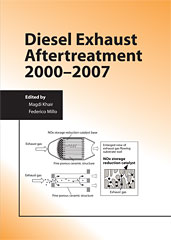Journal Article
Achieving Ultra Low NOX Emissions Levels with a 2017 Heavy-Duty On-Highway TC Diesel Engine and an Advanced Technology Emissions System - Thermal Management Strategies
2017-03-28
2017-01-0954
The most recent 2010 emissions standards for heavy-duty engines have established a tailpipe limit of oxides of nitrogen (NOX) emissions of 0.20 g/bhp-hr. However, it is projected that even when the entire on-road fleet of heavy-duty vehicles operating in California is compliant with 2010 emission standards, the National Ambient Air Quality Standards (NAAQS) requirement for ambient particulate matter and Ozone will not be achieved without further reduction in NOX emissions. The California Air Resources Board (CARB) funded a research program to explore the feasibility of achieving 0.02 g/bhp-hr NOX emissions.

